Enjoy a Japanese tea ceremony in a traditional storehouse
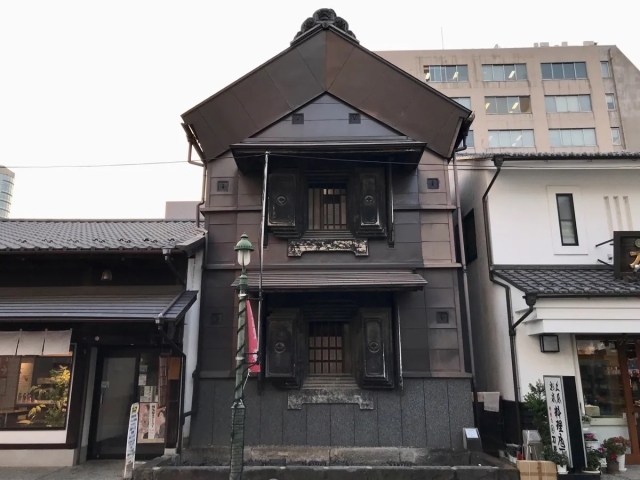
A unique setting for a unique tea ceremony.
If you’re looking to experience traditional Japan, a trip outside of big cities like Tokyo, Osaka and Kyoto can easily deliver what you’re after.
One such spot, Takasaki in Gunma Prefecture, is particularly beautiful and definitely worth a visit for its traditional architecture and atmosphere. It also happens to be home for our reporter Takamichi Furusawa, who enjoys exploring all the unique restaurants the city has to offer but even he was surprised recently when he came across a stunning old kura, a traditional Japanese storehouse, that immediately commanded attention, standing out from all the other buildings on the street.
▼ It was as if time had stopped here while the modern world was built around it.

Despite its old appearance, this building wasn’t just a relic from ages past, as it now houses a cafe that’s open to the public. Stepping inside, Takamichi was immediately whisked back to a Japan from centuries past, with stone floors and wooden details still standing from its original function as a storehouse.
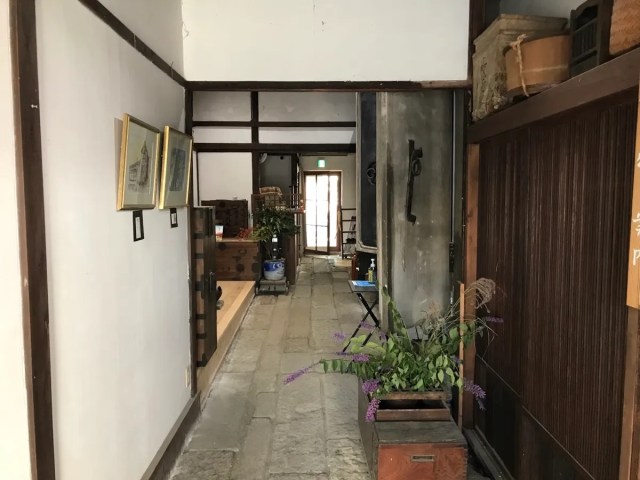
It was cool inside and almost silent, as the thick walls helped to deaden any sound from outside. Along the narrow, stone-paved corridor at the entrance were pieces of vintage wooden furniture, and some wrought iron details that you wouldn’t normally find in a regular modern-day cafe.
The space had an eerie, mysterious aura to it, and as staff guided him deeper into the building, he stopped in awe at the heavy double doors, often a feature of earthen kura like this one, which are designed to keep the inside cool while safeguarding against fires.
▼ They don’t make ’em like this anymore.
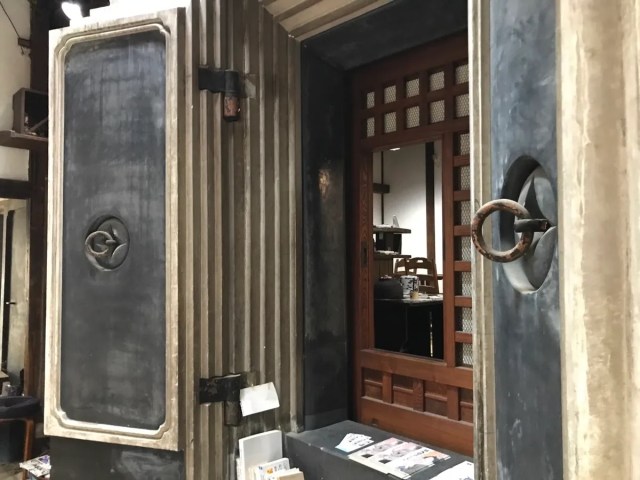
Peering through the doorway revealed what looked to be a tea room. Initially, Takamichi thought they might enter through the big doors, but staff led him into the area through a separate doorway.
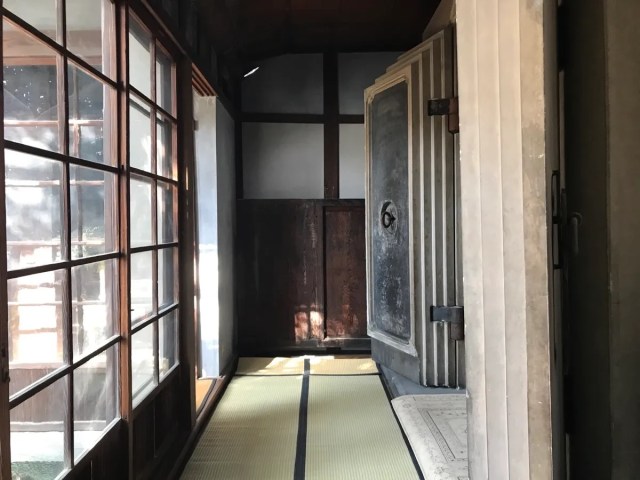
This allowed him to take in even more of the building’s old-timey atmosphere as they made their way down a corridor with tatami mat flooring and old wooden sliding doors with panes of glass that dated back over a century.
▼ Entering through a different set of thick double doors, Takamichi stepped into…
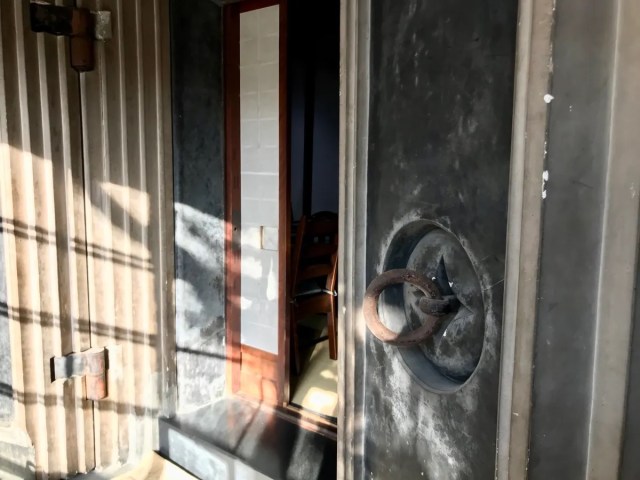
▼ …the tea room.
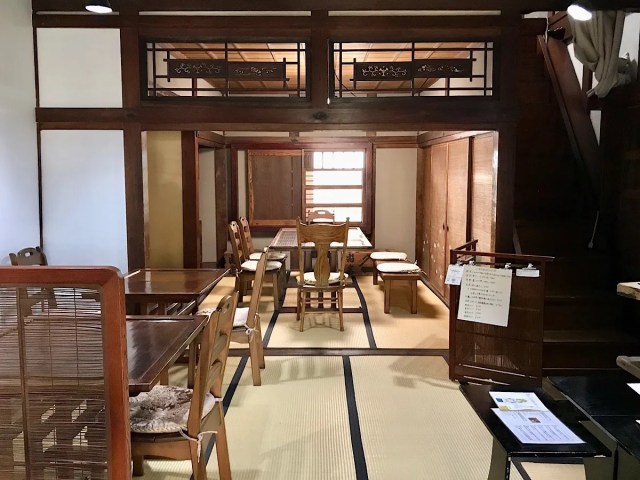
This space looked slightly more modern, with a vibe that was more like a retro kissaten coffeehouse than a traditional tea room. It was like a fusion of Japanese and Western styles that reminded him of a traditional Japanese ryokan inn.
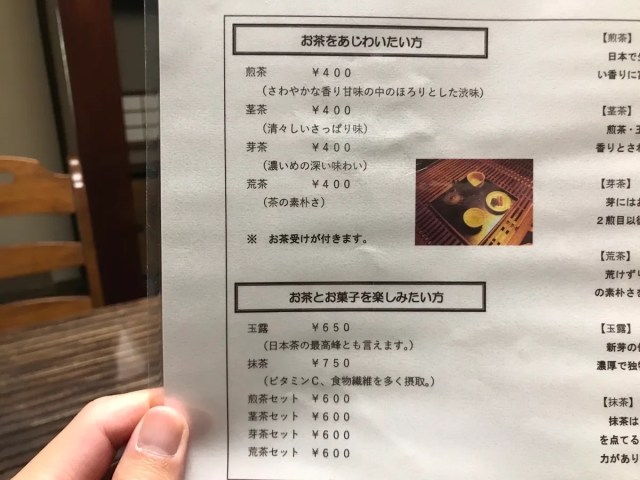
Taking a seat, Takamichi browsed the menu, where he found there were many types of Japanese tea available, with an explanation of each included.
This was helpful for Takamichi, who isn’t all that familiar with Japanese tea, so he was able to order a nice “Gyokuro Set” for 650 yen (US$4.41), which came with a selection of sweets.
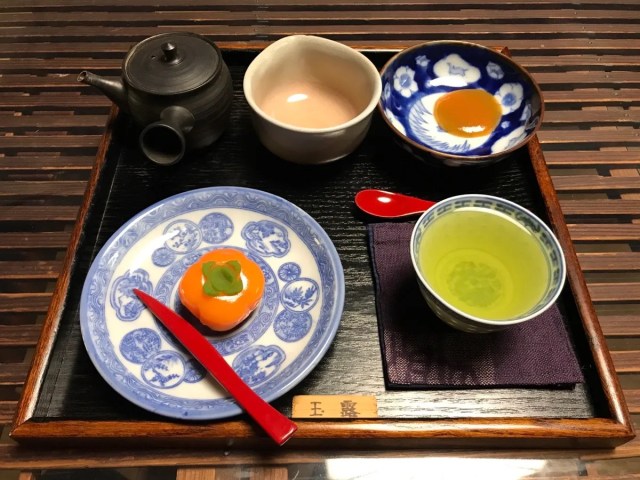
The set came on a tray that contained a number of dishes, but it was the sweet shaped like a persimmon that immediately caught Takamichi’s eye.
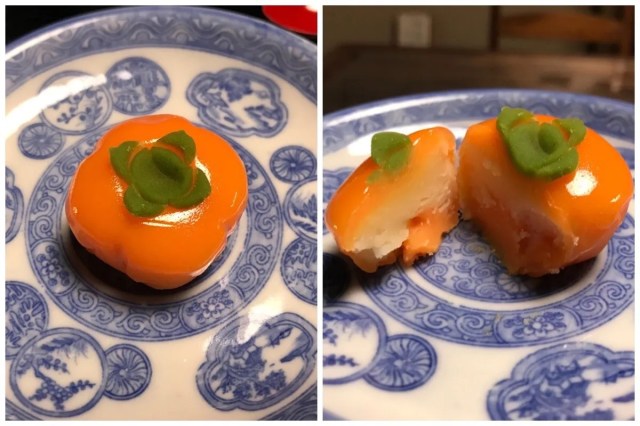
Taking a bite of the sweet first, as you would do during a traditional Japanese tea ceremony, Takamichi instantly tasted the high quality of the ingredients and the skill that went into making it.
Then it was time to move on to the star of the show — the gyokuro, which is a luxurious type of green teat that uses leaves that have been grown in the shade, giving the tea a more pronounced flavour.
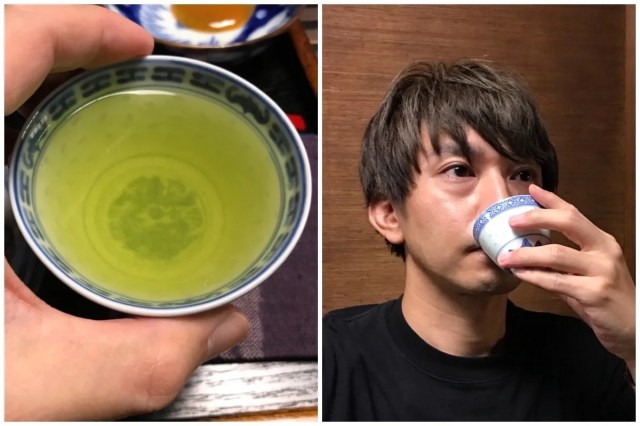
The gyokuro had a delicious flavour with minimal bitterness and astringency, making it very easy to drink, and the elegant taste fit the traditional surroundings perfectly.
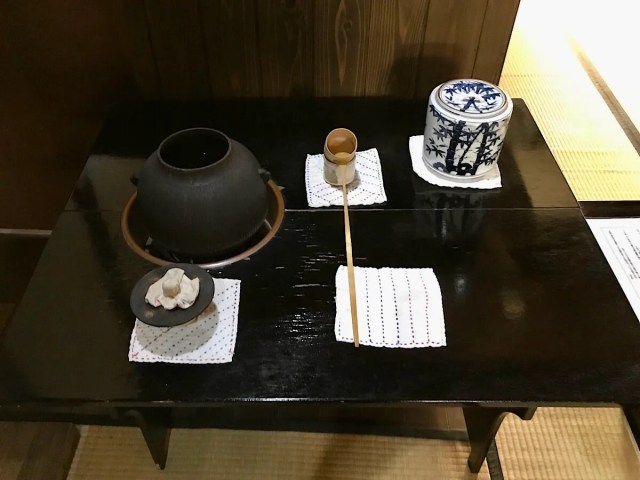
Making the experience even more special is the fact that the teas are self-service, so you can get refills using specially laid-out tea utensils on another table.
The utensils are similar to the ones you’d find at a Japanese tea ceremony, so you can try your hand at the tradition by ladling out water from the iron kettle and into the empty bowl (known as a “yuhimashi”) from your tray, mimicking the steps undertaken by a tea ceremony host.
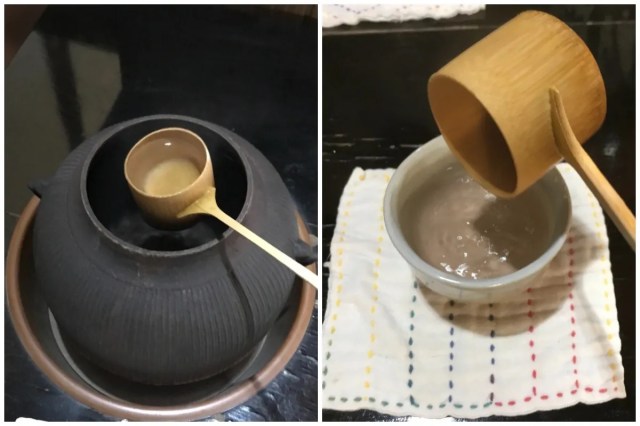
Once piping hot water is drawn from the tea kettle, it’s transferred to the yuhimashi to cool slightly as tea tastes better when the water is slightly cooled. Takamichi followed these steps and waited a moment before bringing the yuhimashi back to his table, where he poured the water from it into his teapot.
▼ The taste of the tea remained delicious even after this second brewing.
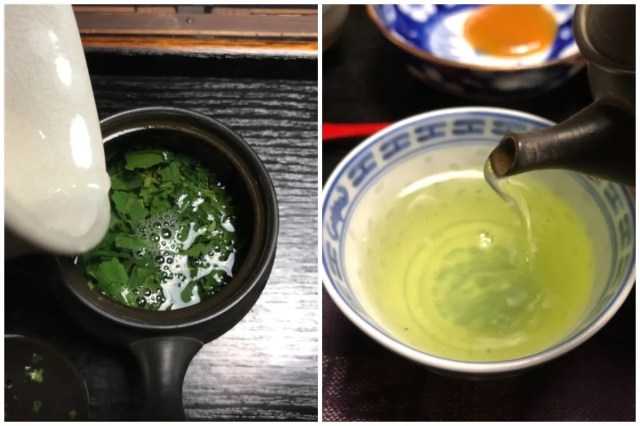
The set includes a dish that contains miso sauce, which is designed to be eaten with a spoonful of tea leaves from the teapot. Takamichi had never eaten tea leaves like this before, but when he tried it, he was surprised to find that it tasted delicious. The softened tea leaves had a slightly chewy texture, and their freshness paired well with the sweet and salty miso sauce, displaying next to no bitterness.
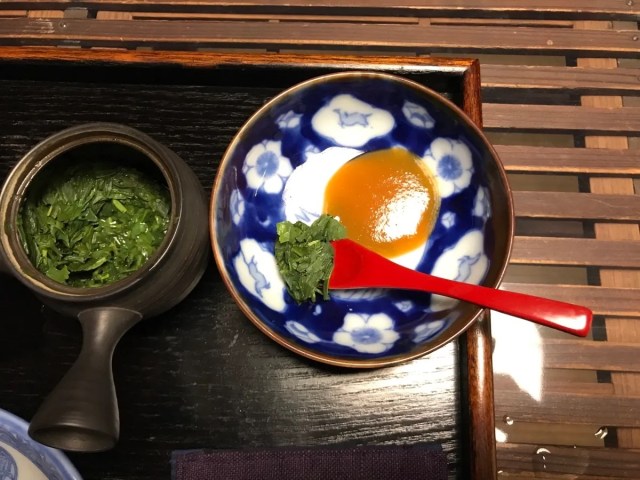
After his solo tea ceremony, Takamichi felt as if he’d nourished both his stomach and his soul. It was a strangely moving experience he’ll never forget, and he highly recommends trying it if you can, perhaps after stopping this nearby restaurant, which feels like a samurai residence.
Cafe Information
Natsume / 棗
Address: Gunma-ken, Takasaki-shi. Miyamotocho 223
群馬県高崎市宮元町223
Open: 11:00 a.m.-5:00 p.m. (subject to change)
Closed: Mondays, Tuesdays, Wednesdays
Website
Related: Kurakissa Instagram account
Images © SoraNews24
● Want to hear about SoraNews24’s latest articles as soon as they’re published? Follow us on Facebook and Twitter!
Credit:

0 comments:
Post a Comment